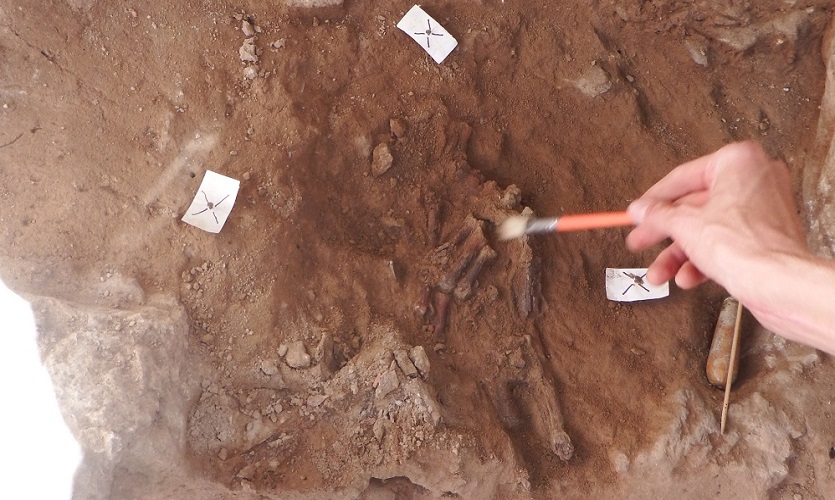Spectacular Neanderthal find reopens debate about earliest 'burials'

(IMAGE: Excavating a Neanderthal hand)
THE DISCOVERY of a virtually complete Neanderthal skeleton in Northern Iraq is set to reopen the debate about whether our closest ancient human relatives buried their dead.
Once described as ‘nasty, brutish and short’, the life of Neanderthals was reinterpreted in the 1970s when pollen found around the remains of four bodies at Shanidar Cave, 500 miles north of Baghdad, was taken as evidence that the hominids not only buried their dead but did so with flowers.
Known as the Flower Burial hypothesis, it may not be as far-fetched as it sounds, according to new research in Antiquity from archaeologists from Liverpool John Moores and Cambridge universities.
The team has described remains left in the ground by the original, hurried excavation in 1975 by American Ralph Solecki.
Spectacular
“This is a truly spectacular find,” said Chris Hunt, professor of cultural paleoecology at Liverpool John Moores.
“We re-located the Shanidar IV findspot and it became apparent that parts of a skeleton, left behind during Ralph Solecki’s excavation (in 1960), were still in-situ.
“The upper remains are staggeringly complete, although the skull was flattened by compression under many tons of cave sediment. The body was placed in a depression on the cave floor in a semi-reclining position with a big stone lying behind the head.”
Around 250 Neanderthals have been unearthed, often consisting of two or three bones at best, given that corpses were frequently scavenged by predators. Analysis of the Shanidar site, where 10 Neanderthals have been unearthed, also shows far from complete skeletons, which probably came to their final positions by natural processes.
'Placed carefully'
However, what the team calls the “little Shanidar IV group of Neanderthals” – probably four remains - seems to be different. At least two individuals seem to have been placed carefully and to have been anatomically complete and undisturbed.
Added Professor Hunt, who is part of the Geography group at LJMU: “We have four bodies within an area the size of a small dinner table and chairs.
He says the layering is inconsistent with all the bodies being deposited at one time, which seems to suggest that the Neanderthals repeatedly deposited bodies in this location.
“If we were dealing with modern people, this might merit the use of the word ‘graveyard’, but this is a step too far for our understanding of Neanderthal behaviour.”
The team plans a detailed analysis to discover if the bones may show how the additional individual died and what happened to the body after death. Analysis of the sediment and pollen in the many samples taken around the body should allow further understanding the processes by which the body became buried - and whether flowers were involved.
- Professor Hunt will be giving a talk on Neanderthal behaviour at the University of Liverpool's Gordon Stephenson Building on Thursday, February 27 at 1pm.


